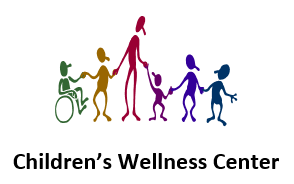Whether you’re expecting a baby or moving your family with small children to a new home, you must baby-proof your house to create a safe environment. According to the National Safe Kids Campaign, accidental injuries are the leading cause of death in children under 14. Household dangers include risks of drowning, burns, poisoning, falls and falling furniture, suffocation, and choking. Baby-proofing your home helps reduce these risks to create a safe space where your infant or toddler can explore, play, and learn without the risk of accidental injury.
Room-by-Room Safety Checklist
The following list includes common hazards found room-by-room in most houses and what you can do to make them safer. Scan through this list with your house in mind to make note of any hazards that should be baby-proofed.
Nursery
- Large, unstable, or tall furniture can tip over. Be sure to secure them with an anchor to the wall.
- Babies and toddlers can potentially climb onto other furniture placed near the crib.
- Once your baby is old enough to sit up and reach for objects, the crib mobile should be removed.
- The crib mattress should be at its lowest setting when a baby can stand up or pull themselves up to prevent falling.
Kitchen
- Install lockable covers on the trash and recycling bins.
- Store breakable dishes, glasses, and other kitchenware out of reach.
- Cook on the back burners.
- Install protective knob covers on the oven.
- Put knives, heavy items, and kitchen cleaners out of reach or in locked cabinets and drawers.
- Remove tablecloths and table runners that a baby could pull off of a table (along with heavy items on the table).
Bathroom
- Store medications and toiletries out of reach.
- Put a safety lock on the toilet seat to lower drowning risks.
- Put soft covers on the bathtub knobs and spout to protect your baby from getting hurt by bumping into them.
- Use non-slip stickers in the bathtub.
- Do not use squeaky toys that spray water in the bath to prevent bacterial infection risk.
- Always unplug and store hot items like curling irons and hair dryers. Do not leave them near the bathtub. Do not let their cords hang over the countertop.
- Never leave standing water in the bathtub.
- Never leave a baby or toddler unattended in the tub – even in as little as an inch of water.
Living Room
- Anchor the television to the wall and secure its electrical cords so that they do not hang freely, posing a strangulation risk.
- Display tall floor lamps that can wobble or tip over behind furniture or anchor them to the wall.
- Put a secure safety screen in front of the fireplace.
Garage
- Install a lock on the door between the house and the garage.
- Lock all detergents, cleaners, chemicals, and other toxic substances in a secure cabinet.
- Make sure tools are stored safely and cannot tip over.
- Regularly check that the garage door safety sensor is working.
How to Baby-Proof: Safety Measures to Secure Your Home for Your Infant or Toddler
General safety concerns and baby-proofing measures to take throughout your home include:
- Any small object – any object that can fit inside a toilet paper tube is small enough for an infant or toddler to choke on. Make sure any small object is out of reach.
- Electrical Outlets – Cover them with plastic childproof plugs.
- Windows – Put childproof locks on all windows and secure screens (additionally) on upper stories.
- Blinds – Do not use window coverings with looped cords.
- Stairways – Cover all stairways with a securely anchored baby gate.
- Doorknobs – Cover doorknobs of the basement, bathrooms, garage, or other rooms that are not thoroughly childproofed with knob covers.
- Cabinets – Use cabinet locks to keep your toddler out of the cabinets and cupboards. Only store safe, non-breakable items in lower cupboards.
- Furniture and Shelves – Anchor all bookshelves, dresser drawers, and other tall, heavy furniture to the wall.
- Corners and Edges – Cover sharp corners and edges of furniture with adhesive foam protectors.
- Rugs – Use non-skid rugs or place grippers under all of your rugs.
- Detectors – Install carbon monoxide detectors on every floor and smoke detectors in every room.
We’re Here to Help: Professional Guidance and Advice for Baby-Proofing Your Home
Baby-proofing your home is vital to your child’s safety, well-being, and your own peace of mind. As your child grows and develops, you’ll want to stay ahead of the curve, in terms of baby-proofing your home, to make sure that your space is safe for your child’s level of mobility, strength, reach, and size.
Our doctors at Children’s Wellness Center are always here for you. We can help you learn more about your child’s development and how to further baby-proof your home as your toddler reaches and achieves more and more milestones. If you have any questions about baby-proofing your home to create a safe environment for your infant or toddler, please contact us.

